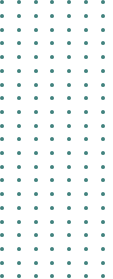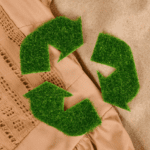Contents by Eurofins SL&TH Regulatory Services Team
Europe
European Initiatives related to chemicals, POP and RoHS legislation
| Initiative | State |
| Persistent organic pollutants – PFOS limits and exemptions
Perfluorooctanesulfonic acid (PFOS) and its derivatives are listed in Annex I to Regulation (EU) 2019/1021. This measure will reduce the maximum PFOS concentration allowed as unintentional trace contaminant in substances, mixtures and articles and will remove the last specific exemption allowed in the EU since it is no longer needed. |
The European Commission is preparing the draft act. |
Miscellaneous technical publications relating to PFAS
The latest publications in relation to PFAS are summarised in the table below:
| Date | Country/ Region | Entity | Publication |
| 13/01/2023 | BfR
(German Federal Institute for Risk Assessment) |
Germany | Per- and polyfluoroalkyl substances (PFASs): Proposal for restriction under the REACH Regulation submitted to the European Chemicals Agency. |
| 13/01/2023 | The Environmental Protection Agency | Denmark | Proposal for limiting PFAS submitted to the EU. |
| 13/01/2023 | Federal Institute for Occupational Safety and Health (BAUA) | Germany | Restriction proposal for PFAS submitted to the European Chemicals Agency. |
| 13/01/2023 | National Institute for Public health and the Environment | Netherlands | Proposed European PFAS ban officially submitted. |
| 13/01/2023 | Norwegian Environment Agency | Norway | Proposals to ban PFAS have been submitted to ECHA.
The Norwegian Environment Agency and the authorities in four other countries have submitted a proposal to the European Chemicals Agency to ban fluorinated substances (PFAS). |
| 13/01/2023 | Swedish Chemicals Agency | Sweden | Sweden is behind a bill to stop the use of PFAS within the EU.
Together with authorities in four other countries, the Chemicals Inspectorate has submitted a comprehensive proposal to the EU to limit the use of roughly 10,000 PFAS chemicals. |
| 17/01/2023 | Ministry of Ecological Transition and Territorial Cohesion | France | The 2023-2027 “PFAS” action plan.
The aim is to strengthen the protection of French people and the environment against the risks associated with PFAS. This plan is based on the following six areas of action:
|
US
New York Approves PFAS in Textiles Regulation
The State of New York recently approved Bill A07063A to amend Section 37-0121 of the Environmental Conservation Law to prohibit intentionally added PFAS chemicals in apparel products, effective December 31st, 2023.
PFAS is defined as a class of fluorinated organic chemicals containing at least one fully fluorinated carbon atom.
Apparel is defined as clothing items intended for regular wear or formal occasions, including, but not limited to, undergarments, shirts, pants, skirts, dresses, overalls, bodysuits, vests, dancewear, suits, saris, scarves, tops, leggings, leisurewear, formal wear, onesies, bibs, and diapers. Apparel does not include professional uniforms or outerwear intended for extreme conditions.
New York Prohibits PFAS in Carpets and Establishes New Carpet Recycling Program
The State of New York recently approved Bill A09279A to amend Article 27 of the Environmental Conservation Law by adding a new title 33 to require producers to submit a plan for the establishment of a carpet collection program for unused and discarded carpets for the Department of Environmental Conservation’s (DEC) approval by December 31st, 2023. No later than July 1st, 2024 or six months after the plan is approved by the DEC, whichever occurs later, producers must implement the carpet collection program utilizing collection sites, and producers may not sell carpets in the state unless the producer is registered with the DEC on and after the date of implementation of the carpet collection program. On or before July 1st, 2025, and annually thereafter, producers must submit a report to the DEC that includes, for the previous program year, a description of the program. Beginning July 1st, 2024, retailers may not sell carpets in the state unless the producer of such carpet is participating in a carpet collection program. On or after one year after a plan is approved by the DEC, carpets sold in the state must be accompanied by the following identifying information:
- Name of the producer and contact information; and
- Carpet material, composition, and type of construction.
All carpets sold in the state must be manufactured with the following minimum amounts from post-consumer sources:
- Within 1 year after the plan is approved by the DEC, a minimum of 10% post-consumer content;
- Within 4 years thereafter, a minimum of 20% post-consumer content; and
- 5 years thereafter, a minimum of 30% post-consumer content.
The new bill will also prohibit carpets containing PFAS substances for any purpose, effective December 31st, 2024.
A carpet is defined as a manufactured article that is (a) used in commercial buildings or single or multifamily residential buildings, (b) affixed or placed on the floor or building walking surface as a decorative or functional building interior or exterior feature, and (c) primarily constructed of a top surface of synthetic or natural face fibers or yarns or tufts attached to a backing system made of synthetic or natural material. A carpet does not include handmade rugs, area rugs, or mats.
PFAS substances are defined as a class of fluorinated organic chemicals containing at least one fully fluorinated carbon atom.
China
China Releases List of New Pollutants for Priority Management
On December 30th, 2022, the China’s Ministry of Ecology and Environment issued Order No. 28 to release the first official list of new pollutants for priority management, which will become effective on March 1st, 2023. The list of new pollutants for priority management contains the following 14 types of new pollutants and its environmental risk control measures:
- Perfluorooctane sulfonic acid, its salts and perfluorooctane sulfonyl fluoride (PFOS and it’s salts)
- Perfluorooctanoic acid, its salts and related compounds (PFOA related)
- Decabromodiphenyl ether
- Short-chain chlorinated paraffins
- Hexachlorobutadiene
- Pentachlorophenol and its salts and esters
- Dicofol
- Perfluorohexyl sulfonic acid, its salts and its related compounds (PFHxS Related)
- Declone and its cis and trans isomers
- Dichloromethane
- Trichloromethane
- Nonylphenol
- Antibiotic
- Obsolete class
- Hexabromocyclododecane
- Chlordane
- Mirex
- Hexachlorobenzene
- DDT
- α- hexachlorocyclohexane
- β- hexachlorocyclohexane
- Lindane
- Endosulfan prodrug and its related isomers
- Polychlorinated biphenyls
Sustainability, environmental and circular economy
Miscellaneous technical publications relating to environmental, plastics, packaging and waste
| Date | Country/ Region | Publication |
| 16/12/2022 | Belgium | An international instrument to reduce plastic pollution.
From November 26 to December 2, the 1st meeting of the Intergovernmental Negotiating Committee on Plastic Pollution (INC1) took place in Punta del Este, Uruguay. This is the 1st session of a series of 5 whose objective is to set a new legally binding international instrument to fight against plastic pollution, including in the seas and oceans. The final result of these negotiations is expected by the end of 2024. It should have an impact comparable to that of the Paris Climate Agreements. |
| 16/12/2022 | France | Order of December 8, 2022 establishing the national plan for reducing emissions of atmospheric pollutants.
The PREPA defines the actions to be implemented to achieve the national objectives for reducing emissions of certain atmospheric pollutants (SO2, NOx, VOCNM, NH3, PM2.5) for the years 2025 and 2030 defined in article D. 222- 38 of the environment code pursuant to article L. 222-9 of the environment code. |
| 22/12/2022 | Europe | Commission Delegated Regulation (EU) 2022/2526 of 23 September 2022 amending Regulation (EU) 2017/852 of the European Parliament and of the Council as regards the temporary storage of mercury waste in liquid form (C/2022/6696) was published. |
| 31/01/2023 | Europe | New product priorities for Ecodesign for Sustainable Products.
European Commission opened the public consultation which the Commission seeks views on the categories of new products that is subject to performance and information-related requirements, to ensure greater sustainability. |
| 14/01/2023 | UK | The UK Environment Secretary announced that a range of polluting single-use plastics will be banned in England in October 2023. The ban will include single-use plastic plates, trays, bowls, cutlery, balloon sticks, and certain types of polystyrene cups and food containers. For more information here. |
| 14/01/2023 | UK | Publication of the Summary of responses and government response related to a call for evidence on single-use plastic items which are commonly littered. They were interested in views on the following single-use plastic items: wet wipes, tobacco filters, sachets, and single-use cups.
They were also asking for views on how to shift away from single-use items to reusable or refillable alternatives. |
| 17/01/2023 | UK | The Packaging Waste (Data Reporting) (Scotland) Regulations 2023 (Scottish S.I. 2023 No.7).
These Regulations impose requirements on producers who are established in Scotland to collect data on the packaging they supply to others, and, in some cases, to report some of that information to the Scottish Environment Protection Agency (SEPA). |
Cosmetics & Personal Care
Checking the authenticity of your raw materials
Today’s consumers are paying more attention to the quality and especially the origins and traceability of the ingredients in cosmetic products. Given the complexity of the sources of supply, it is not always easy to meet these consumer demands.
Isotope ratios, the relative contents of the heavy and light forms of an element in a given sample, can be accurately measured in natural abundance by SNIF-NMR® (1) or by IRMS (2). Since these ratios are influenced by factors related to the environment or the synthesis of a product, they can provide information on the origin of compounds and allow for the detection of substitutions by chemically identical molecules from a different source.
The Eurofins network of laboratories is known for its development of the SNIF-NMR® method. This technique, in combination with IRMS, can provide a scientific guarantee of the authenticity of raw materials and ingredients.
Eurofins Cosmetics and Personal Care network of companies offers isotopic analysis to:
- determine the natural or synthetic origin of a flavouring substance (e.g. vanillin).
- differentiate between animal and vegetal origin (e.g. glycerol), terrestrial or marine origin (e.g. Chondroitin sulfate), and plant or animal origin (squalene/squalene)
- verify vegetable sources of organic acids (Citric, malic tartaric, ascorbic, propionic etc.)
Eurofins Cosmetics & Personal Care can also develop bespoke solutions to meet your needs.



